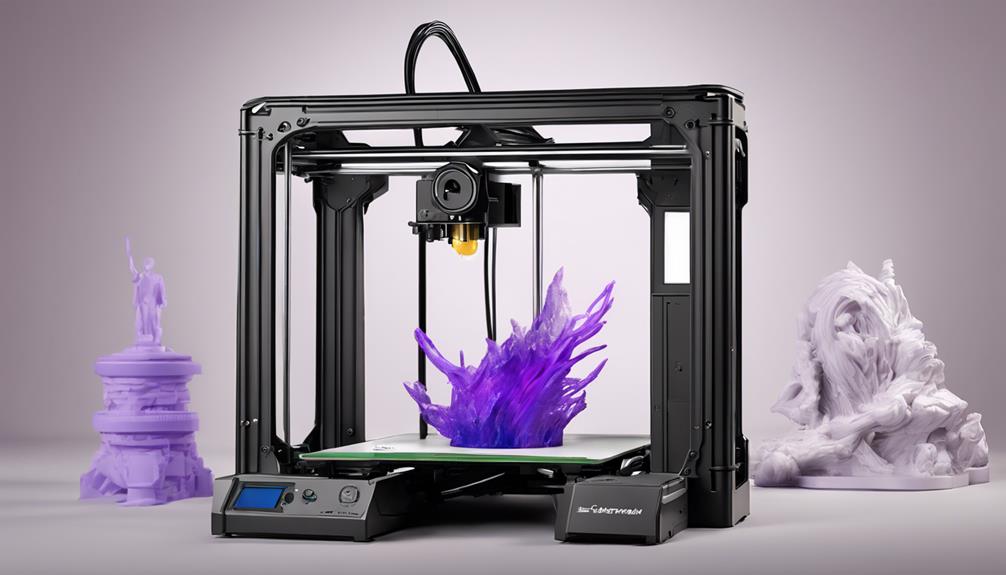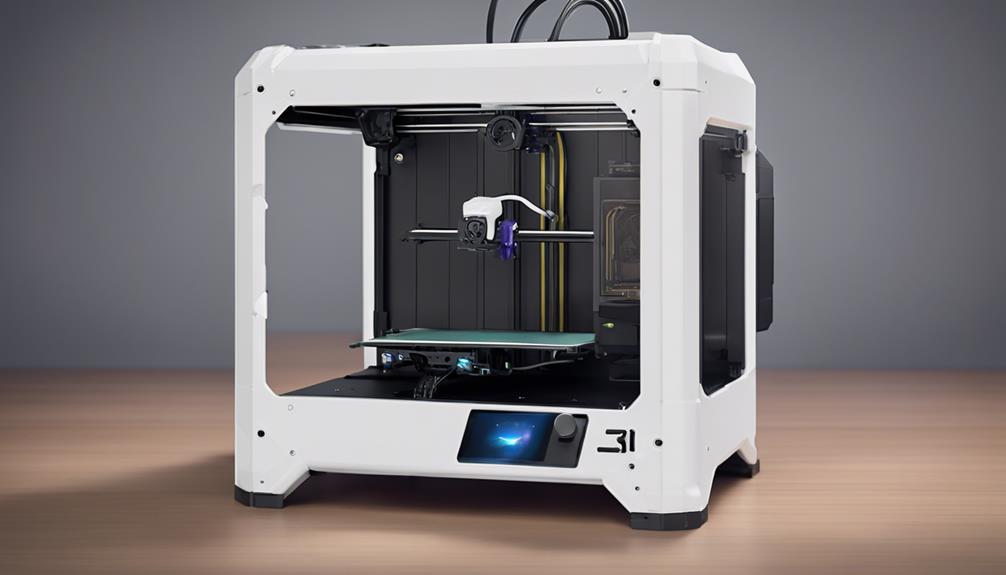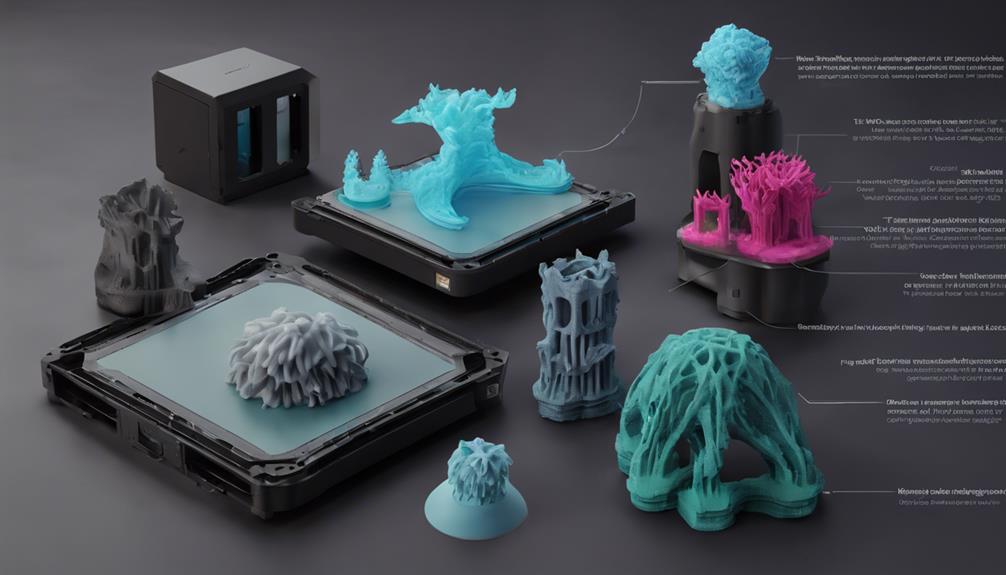When considering the intricacies of printing TPU on the Ender 3 Unleashed, one must navigate through a maze of settings and potential enhancements to guarantee a smooth printing experience. With a delicate balance of temperature adjustments and retraction settings, the Ender 3 can handle TPU filaments with finesse. However, exploring upgrades like the EZR Struder or Direct Drive Extruder might just be the key to tapping into the full potential of this printer for handling even the most flexible TPUs. The journey to mastering TPU printing on the Ender 3 Unleashed is a meticulous process that promises rewarding results for those willing to delve further.
Stock Configuration Settings

When printing TPU on an Ender 3 with its stock configuration, adjusting slicer settings for temperature, speed, and retractions is essential for successful prints. Setting the printing temperature between 220-230°C, maintaining a printing speed of 30-40mm/s (with infill at 50mm/s), and keeping the bed temperature at 60°C are vital.
Additionally, adjusting retraction settings lower for flexible filaments like TPU can greatly enhance print quality. The stock Ender 3 can handle TPU with some modifications, making it feasible to work with less flexible TPUs, such as those around 98A.
Upgrades for Flexible Filaments
Considering the demands of printing flexible filaments like TPU on the Ender 3, exploring upgrades becomes essential for enhancing print quality and performance. When it comes to handling flexible materials effectively, upgrades can make a significant difference. Here is a comparison table showcasing some popular upgrades for flexible filaments:
| Upgrade | Description |
|---|---|
| EZR Struder | Effective for very flexible TPUs |
| Direct Drive Extruder | Handles flexible filaments well |
| Printable Extruder | Allows printing with flexible materials |
These upgrades can help in achieving better results when printing flexible filaments on the Ender 3, ensuring smoother and more reliable prints.
Printing Ninjaflex With EZR Struder

To enhance the capability of the Ender 3 in printing flexible filaments like NinjaFlex, utilizing the EZR Struder is a dependable option. The EZR Struder provides better grip and control over the filament, essential for handling the flexibility of materials like NinjaFlex.
With this upgrade, the Ender 3 can effectively extrude and print NinjaFlex without the typical issues associated with flexible filaments. The EZR Struder guarantees smoother filament feeding, reducing the chances of clogs or misprints.
Print Quality and Troubleshooting
Achieving peak print quality with TPU on the Ender 3 requires meticulous attention to settings and potential troubleshooting measures.
When printing TPU on a stock Ender 3, minor layer separation might occur, but this can be improved by adjusting settings like retraction and print speed.
Addressing common issues such as under-extrusion or poor bed adhesion is essential for successful TPU prints.
Upgrading to a direct drive extruder or EZR Struder can enhance print quality, especially when working with very flexible TPUs like NinjaFlex.
Final Thoughts and Recommendations

In my experience, optimizing your Ender 3 for TPU printing can greatly enhance your overall 3D printing capabilities. Upgrading to components like the EZR Struder or Direct Drive Extruder can notably improve the handling of flexible filaments such as NinjaFlex. These upgrades may require some investment but can lead to smoother printing experiences with TPU filaments.
Additionally, adjusting slicer settings for specific TPU types and considering upgrades like a printable extruder can help achieve better results. While the stock Ender 3 can handle some TPU printing with modifications, investing in upgrades tailored for flexible materials can take your TPU printing to the next level, ensuring more successful prints and higher quality output.
Frequently Asked Questions
Can the Stock Ender 3 Handle Extremely Flexible Ninjaflex Filaments?
Yes, the stock Ender 3 can handle extremely flexible NinjaFlex filaments with some challenges. Upgrades like EZR Struder and Direct Drive Extruder are suggested for best results. Adjust settings for temperature, speed, and retraction accordingly.
What Are the Common Issues When Printing TPU on Ender 3?
Printing TPU on Ender 3 can lead to minor challenges like layer separation. Upgrades enhance printing quality. My experience confirms successful prints with NinjaFlex using recommended modifications. Addressing these issues guarantees smoother TPU printing results.
Is It Necessary to Upgrade to Print Tpu, or Are Stock Settings Sufficient?
I find that stock Ender 3 settings can handle some TPU printing with adjustments. Upgrades like EZR Struder can enhance flexibility. While upgrades aren't necessary, they offer smoother results. Overall, explore both options based on your needs.
How Does Layer Separation Affect TPU Prints on Ender 3?
Layer separation in TPU prints on Ender 3 can be like a crack in a smooth surface, impacting strength. Adjusting temperatures, speeds, and retraction settings minimizes this issue. With upgrades, like a Direct Drive, achieving seamless TPU prints is possible.
Are There Other Flexible Filament Options Besides TPU for Ender 3?
There are alternative flexible filaments besides TPU for Ender 3. Materials like TPE (90A) and Soft PLA (92A) are viable options. Consider Shore Hardness rating when selecting filaments for your printing needs.
Conclusion
Just as a skilled craftsman hones their tools to perfection, so too must we fine-tune our Ender 3 for printing TPU.
Like a blacksmith forging a blade, each adjustment and upgrade refines our printer's capabilities, allowing us to create with precision and grace.
Embrace the journey of calibration and improvement, for in the end, it's the dedication to mastery that yields truly exceptional results.